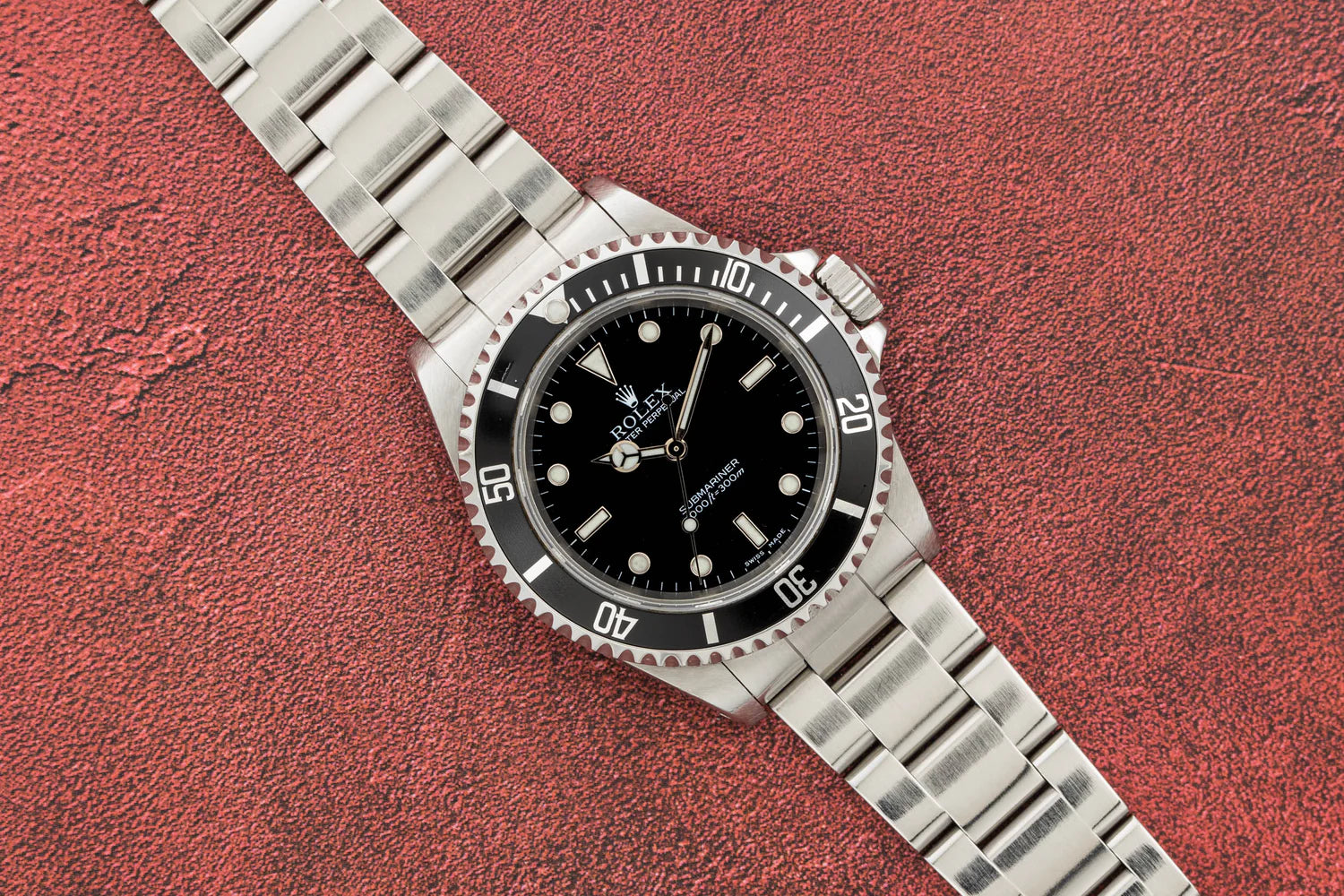Is Neo-Vintage Rolex Too Old? Rethinking Value in Pre-Owned
Recently at a RedBar meetup, I was talking to someone in the market for his first Submariner. He’d narrowed it down to the current reference (the 126610, or the no-date 124060), but was frustrated with resale pricing and retail availability. When I suggested the previous-gen 116610 or even a five-digit like the 16610, he dismissed them: “Those are too old. The movements aren’t as good.”
That answer caught me off guard—not because it was wrong, necessarily, but because I hadn’t really considered that perspective as a buyer. “Too old” is an easy label to slap on anything out of production, especially in a world where mechanical specs are just a Google search away. But does it actually hold up under scrutiny?
The Mechanical “Problem” (Is It One?)

Image Source: Analog:Shift
For my RedBar friend, the biggest objection was mechanical: why spend thousands on a watch that doesn’t have the latest Rolex caliber? It’s a fair question. The current Submariner runs the 3235 movement, with a beefed-up 70-hour power reserve and some nice technical upgrades—Rolex’s super-efficient Chronergy escapement, antimagnetic Parachrom hairspring, Paraflex shock absorbers, and so on. If you’re looking purely at specs, that’s an easy win for the modern watch.
But what about the 3135 in the 16610, or earlier movements in other models and references? Here’s where the argument loses a little steam. Rolex has spent decades building movements for the long haul—serviceable, robust, and designed to be overhauled again and again. The caliber 3135, for example, was made from 1988 to 2018—a 30-year run. During that time, it quietly collected upgrades, like the introduction of the antimagnetic Parachrom hairspring in 2000. A well-serviced 3135, regardless of its production year, will keep within Superlative Chronometer standards, resist magnetism, handle shock, and run for decades.

Rolex Submariner on Everest Curved End Rubber Deployant Strap
Sure, there are incremental improvements with each new release. But to call an older caliber “mechanically inferior” is missing the point, in my opinion. It’s not really about old vs. new; it’s about what matters to you. Do you need 70 hours of power reserve, or do you plan on wearing the watch every day?
Features, Creature Comforts, and Everything In Between

Image Source: Huntington Company
What actually makes a watch feel “too old” to someone shopping the pre-owned market? Often, it’s less about the movement and more about features—solid end links, modern clasps, ceramic bezels, quickset dates, sapphire crystals, and so on. Rolex trickled out these upgrades over years and across models. Solid end links appeared in later runs of five- and six-digit references (the GMT-Master II 16710 got them around 2000). If you need a quickset date on your Datejust, look at examples from the late ‘70s onward.
If a particular “must-have” is a deal breaker, chances are you can find it on a pre-ceramic Sub, GMT, or Explorer—if you know which year or batch to look for. In other words, “too old” is often just code for “not the features I want,” not an objective measure of age or quality.
Why Some People Prefer “Old”

Image Source: @crownedkoi on Instagram
Of course, the pendulum swings both ways. The things my RedBar friend saw as drawbacks—hollow end links, drilled lugs, smaller cases, jangly bracelets—are exactly what some collectors are hunting for. Drilled lugs make strap changes a breeze. The lighter, more toolish feel of five-digit Rolexes has its own charm, especially if you’re into no-nonsense, go-anywhere watches. Want a Sub with real vintage vibes? You’ll have to go back a few references. Matte dials, tritium lume, and simpler finishing aren’t coming back any time soon.
Maybe you like the modern, more luxurious feel of the current Submariner—or maybe you’d rather have the brushed surfaces, smaller cases, and matte bezels of a previous generation. The beauty of the Rolex secondary market is that both options exist, and neither is objectively right or wrong.
Final Thoughts

Image Source: Bob's Watches
The line between “too old” and “just right” is blurrier than most people realize. Sometimes it comes down to comfort, aesthetics, or a feature that matters to you. Sometimes it’s just about wanting something brand new. There’s no wrong answer. But next time you find yourself dismissing a watch as outdated, remember: even a 30-year-old Submariner was built to last for decades—and most of the so-called “inferior” movements are still ticking, still serviceable, and still ready for another lifetime on the wrist.
Buying a watch is personal. Just don’t let the latest specs—or someone else’s hangups—stop you from finding the one that’s actually right for you.









Leave a comment